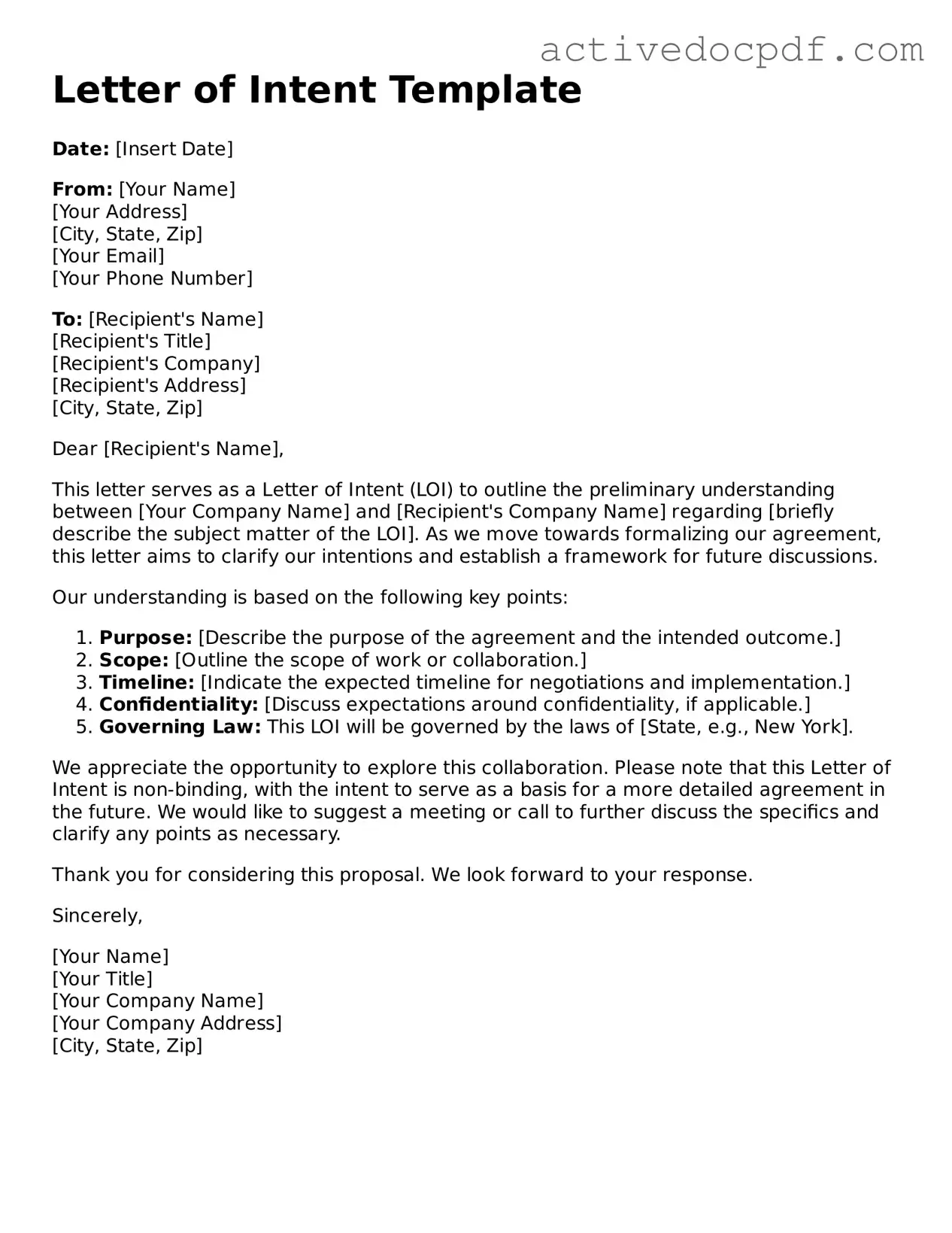Legal Letter of Intent Template
A Letter of Intent (LOI) is a document that outlines the preliminary understanding between two or more parties who intend to enter into a formal agreement. This form serves as a foundation for negotiations, detailing key terms and conditions while expressing the intent to move forward. While not legally binding, an LOI can significantly shape the direction of future discussions and agreements.
Edit Form Online
